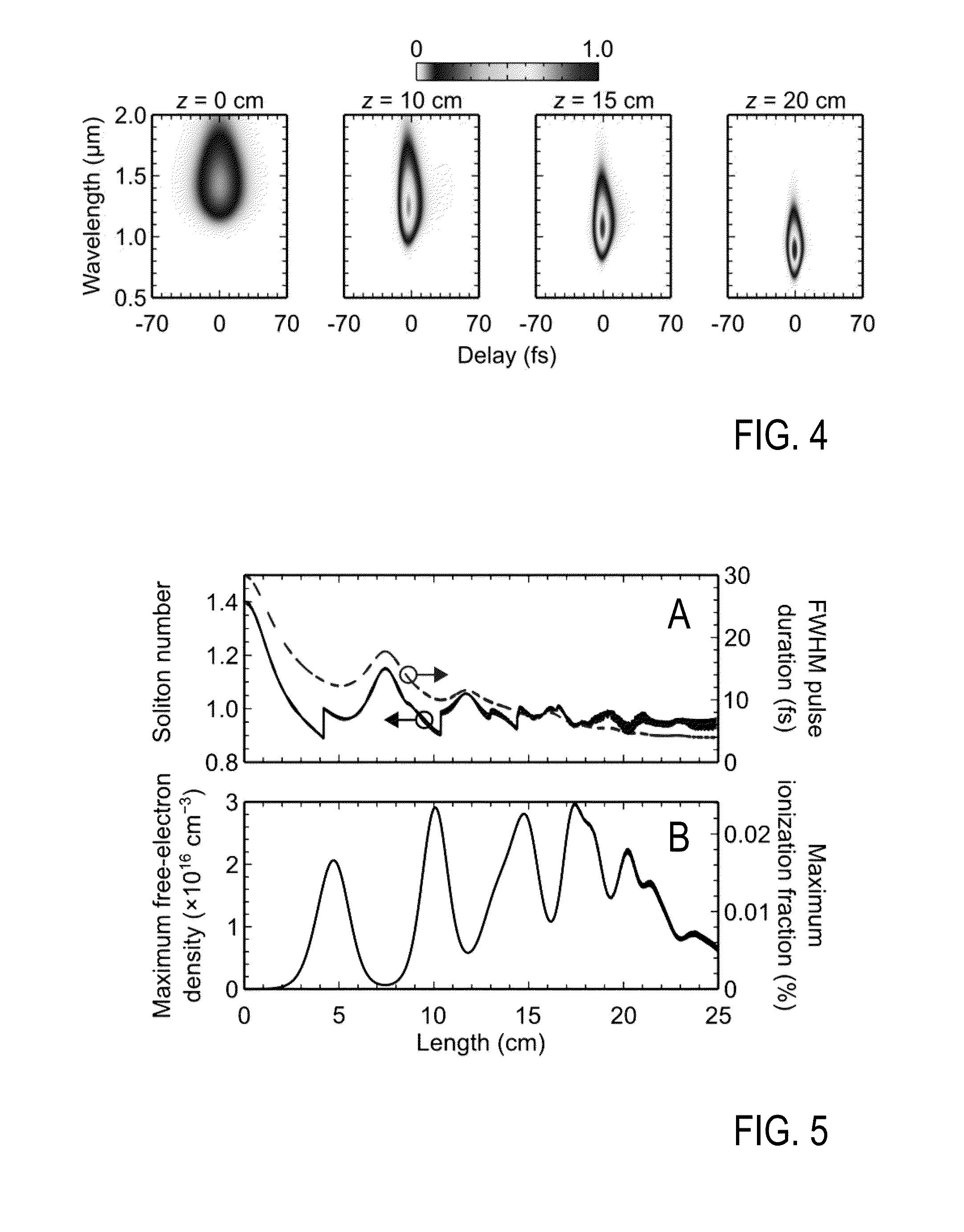Method and light pulse source for generating soliton light pulses
a light pulse and soliton technology, applied in the field of soliton light pulse generation, can solve the problems of low damage threshold, difficulty in tuning the generated wavelength, and requirement of establishing phase matching, and achieve the effects of reducing the density of the operation medium, increasing the waveguide diameter, and low dispersion
- Summary
- Abstract
- Description
- Claims
- Application Information
AI Technical Summary
Benefits of technology
Problems solved by technology
Method used
Image
Examples
first embodiment
[0078]A first embodiment of a light pulse source device 100 according to the invention is schematically illustrated in FIG. 1. The light pulse source device 100 comprises a pump laser source 10 with a pulse laser 11 and focusing optics 12 and a pulse guiding medium 20 comprising a PCF 21 which is arranged in a pressure system 30 including at least one optically accessible gas cell 31. The pump laser 11 is e.g. an optical parametric amplifier (OPA) or a fiber laser. PCF 21 is a Kagomé-lattice hollow-core PCF which is made using the procedure and facilities as discussed in [6]. The PCF 21 has an inner hollow core 25 (see FIG. 2, insert) with a diameter of e.g. 18 μm. A piece of PCF 21 of the required length, e. g. 25 cm, is fitted into the gas cell 31, wherein a front facet 22 and a rear facet 23 of the PCF 21 are kept in place by using e.g. V-grooves. The shape of PCF 21 in the gas cell 31 can be straight or slightly curved (as shown). The gas cell 31 is optically accessible from bot...
PUM
 Login to View More
Login to View More Abstract
Description
Claims
Application Information
 Login to View More
Login to View More - R&D
- Intellectual Property
- Life Sciences
- Materials
- Tech Scout
- Unparalleled Data Quality
- Higher Quality Content
- 60% Fewer Hallucinations
Browse by: Latest US Patents, China's latest patents, Technical Efficacy Thesaurus, Application Domain, Technology Topic, Popular Technical Reports.
© 2025 PatSnap. All rights reserved.Legal|Privacy policy|Modern Slavery Act Transparency Statement|Sitemap|About US| Contact US: help@patsnap.com



